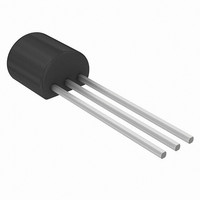TMP36GT9 Analog Devices Inc, TMP36GT9 Datasheet - Page 12

TMP36GT9
Manufacturer Part Number
TMP36GT9
Description
IC SENSOR TEMP 2.7/5.5 TO-92-3
Manufacturer
Analog Devices Inc
Datasheet
1.TMP35GT9Z.pdf
(20 pages)
Specifications of TMP36GT9
Package / Case
TO-226-3, TO-92-3 (TO-226AA)
Rohs Status
RoHS non-compliant
Sensing Temperature
-40°C ~ 125°C
Output Type
Voltage
Voltage - Supply
2.7 V ~ 5.5 V
Accuracy
±1°C
Peak Reflow Compatible (260 C)
No
Ic Function
Temperature Sensor IC
Termination Type
Through Hole
Leaded Process Compatible
No
Mounting Type
Through Hole
Lead Free Status / RoHS Status
Contains lead / RoHS non-compliant
Available stocks
Company
Part Number
Manufacturer
Quantity
Price
Part Number:
TMP36GT9
Manufacturer:
ADI/亚德诺
Quantity:
20 000
Company:
Part Number:
TMP36GT9Z
Manufacturer:
MURATA
Quantity:
12 000
Part Number:
TMP36GT9Z
Manufacturer:
ADI/亚德诺
Quantity:
20 000
TMP35/TMP36/TMP37
AVERAGE AND DIFFERENTIAL TEMPERATURE
MEASUREMENT
In many commercial and industrial environments, temperature
sensors often measure the average temperature in a building, or
the difference in temperature between two locations on a factory
floor or in an industrial process. The circuits in Figure 28 and
Figure 29 demonstrate an inexpensive approach to average and
differential temperature measurement.
In Figure 28, an OP193 sums the outputs of three temperature
sensors to produce an output voltage scaled by 10 mV/°C that
represents the average temperature at three locations. The circuit
can be extended to include as many temperature sensors as
required as long as the transfer equation of the circuit is
maintained. In this application, it is recommended that one
temperature sensor type be used throughout the circuit;
otherwise, the output voltage of the circuit cannot produce an
accurate reading of the various ambient conditions.
The circuit in Figure 29 illustrates how a pair of TMP3x sensors
used with an OP193 configured as a difference amplifier can
read the difference in temperature between two locations. In
these applications, it is always possible that one temperature
sensor is reading a temperature below that of the other sensor.
To accommodate this condition, the output of the OP193 is
offset to a voltage at one-half the supply via R5 and R6. Thus,
the output voltage of the circuit is measured relative to this
point, as shown in Figure 29. Using the TMP36, the output
voltage of the circuit is scaled by 10 mV/°C. To minimize the
error in the difference between the two measured temperatures,
a common, readily available thin-film resistor network is used
for R1 to R4.
Rev. F | Page 12 of 20
0.1µF
0.1µF
TMP3x
TMP3x
TMP3x
0°C ≤ T
A
2.7V < +V
≤ 125°C
300kΩ
300kΩ
300kΩ
NOTE:
R1
R2
R3
TMP36
TMP36
Figure 28. Configuring Multiple Sensors for
Figure 29. Configuring Multiple Sensors for
7.5kΩ
1
Differential Temperature Measurements
@ T1
@ T2
R1–R4, CADDOCK T914–100k–100, OR EQUIVALENT.
R4
Average Temperature Measurements
S
< 5.5V
3
2
2.7V < +V
100kΩ
–
+
FOR R1 = R2 = R3 = R;
V
R8
25kΩ
R5 =
R4 = R6
R5
OP193
R9
25kΩ
TEMP(AVG)
R3
CENTERED AT
R4
7
1
R1
R1
1
3
4
S
1
< 5.5V
0.1µF
100kΩ
= 1 (TMP3x
R6
1µF
6
3
2
3
–
+
OP193
V
@ 10mV/°C FOR TMP35/TMP36
@ 20mV/°C FOR TMP37
TEMP(AVG)
7
R5
100kΩ
R6
7.5kΩ
V
1
OUT
4
+ TMP3x
CENTERED AT
0.1µF
= T2 – T1 @ 10mV/°C
R2
1
6
2
+ TMP3x
R7
100kΩ
V
V
2
3
S
)
OUT













